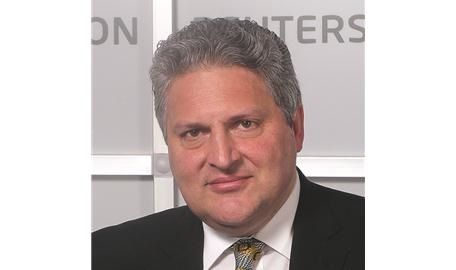IT’S HARD TO argue that the banking industry hasn’t made significant progress since the financial crisis, having undergone and in many cases still working through processes to right-size, re-balance and re-tool. Considering the severe headcount and expense reductions and business-line filleting that have underpinned efforts to increase returns on equity, it’s been painful.
Yet for all the progress, rogue behaviour continues to pollute the industry’s reputation and retards its rehabilitation in the eyes of policymakers, regulators and the general populace. The task of finding new CEOs still seems to be as much about replacement manoeuvres as it does about succession planning.
The tasks facing banks have been rendered all the more difficult against the stringent demands of re-regulation, the uncertain economic backdrop, unorthodox monetary policy, hard-to-read national politics and tough geopolitics. But non-core assets have nonetheless been offloaded in spades, and capital raisings to replenish depleted resources have by-and-large been conducted successfully (think Credit Suisse, Deutsche Bank, UniCredit), and profitability is on the mend.
And talk of big FIG mergers is back on. Not resolution outcomes like we saw in Spain and Italy this summer but UniCredit making early moves on Commerzbank, JP Morgan having a tilt at Worldpay; or Commerzbank/Deutsche and UniCredit/SG last year. Speculative it might be but it shows that bank bosses are looking beyond the here and now towards positioning for a cost-lite perhaps more consolidated future.
Weighing it all up, I’ve taken to wondering when the banking industry will get the all-clear. It’s certainly felt like that time is approaching, particularly as banks tick off legacy legal issues and can slim their hefty litigation reserves.
BUT JUST WHEN you think progress has been made and enough time has elapsed, along come more sorry episodes that send the industry back several steps. Wells Fargo CEO Tim Sloan’s appearance before the Senate Banking Committee last week summed up so much that’s still wrong with the culture of the banking industry.
It’s not just that he maintained an irritatingly supercilious demeanour throughout or showed no remorse about the large-scale fraud perpetrated by the bank; it’s barely credible that he seems genuinely to believe that he is the best person to lead the bank, having served variously as CAO, CFO, COO, head of wholesale and president before taking over as CEO, all the while sitting on the operating committee during the long period of the fraud.
He admitted management failed to act when the brewing scandal became known while doubtless believing he fully deserved the US$61m he took home between 2011 and 2016. He has no shame. And he should go.
In parallel, the Australian Prudential Regulation Authority is launching a public enquiry into Commonwealth Bank in the wake of money laundering breaches. CEO Ian Narev will be gone by mid-2018 and there’s short money on Rob Whitfield, the career Westpac banker who was appointed to the CBA board in September, taking over.
And while we’re on the subject of regulatory investigations, we shouldn’t forget the one being conducted by the PRA/FCA into Barclays boss Jes Staley over that whistleblowing saga.
The thing is, CEO behaviour and succession rationales are key ingredients in the bank rehab story. Staley’s bizarre behaviour just isn’t good enough; until Sloan has been replaced there’ll be an overhang of negativity at Wells Fargo; and even though CBA is keen to disassociate Narev’s departure from the money-laundering story, history will always relate that it took place on his watch.
Replacing your CEO because of bad publicity or institutional wrongdoing is a world away from the succession planning that a rehabilitated banking industry has to get back to. Such as the in-play search for a CEO to replace Stuart Gulliver at HSBC. Or the always-popular chatter about who will replace Jamie Dimon at JP Morgan Chase.
The HSBC succession is built on the back of solid progress under Gulliver’s tenure. Whoever takes over will drive a continuation strategy or a departure from it. But it’ll be from the safety of a stable ship. The only source of consternation had been the extent to which UK regulators had put pressure on the board to consider external candidates. But in any case we’re told new chairman Mark Tucker has made up his mind and the appointment is with the PRA for ratification.
The very short odds are on John Flint, with Antonio Simoes and Iain Mackay closest internal possibles (odds on Matthew Westerman having lengthened). Lloyds boss Antonio Horta-Osorio had reportedly been open to board overtures while ex-AIG boss (and former JP Morgan banker) Peter Hancock also got a call. We’ll know very soon.
The Dimon succession story has gotten old. All things being equal, he’s not going anywhere for years. Vis Raghavan’s elevation to EMEA CEO merely confirmed what he had already been doing and gave Daniel Pinto more space to dedicate to technology and operations and running the corporate and investment bank.
One issue is how long Pinto, Mary Callahan, Doug Petno, Marianne Lake or Gordon Smith will hang around. Most are 10 years or so younger than Dimon, so who knows. But if ever there was a straight succession story – where the best person for the job from a very strong pool of culture-carrying internal candidates is likely to get it – it’s at the House of Morgan.
